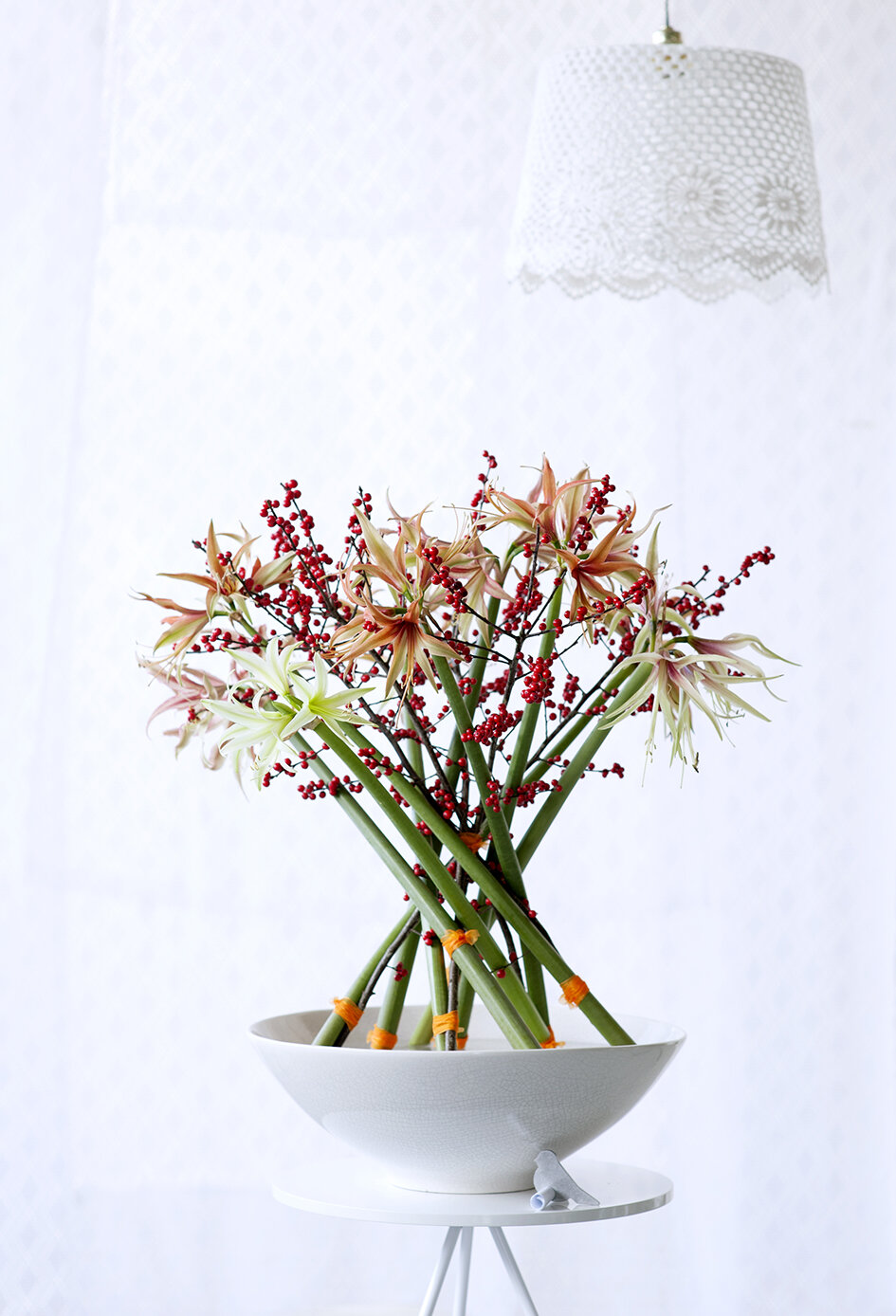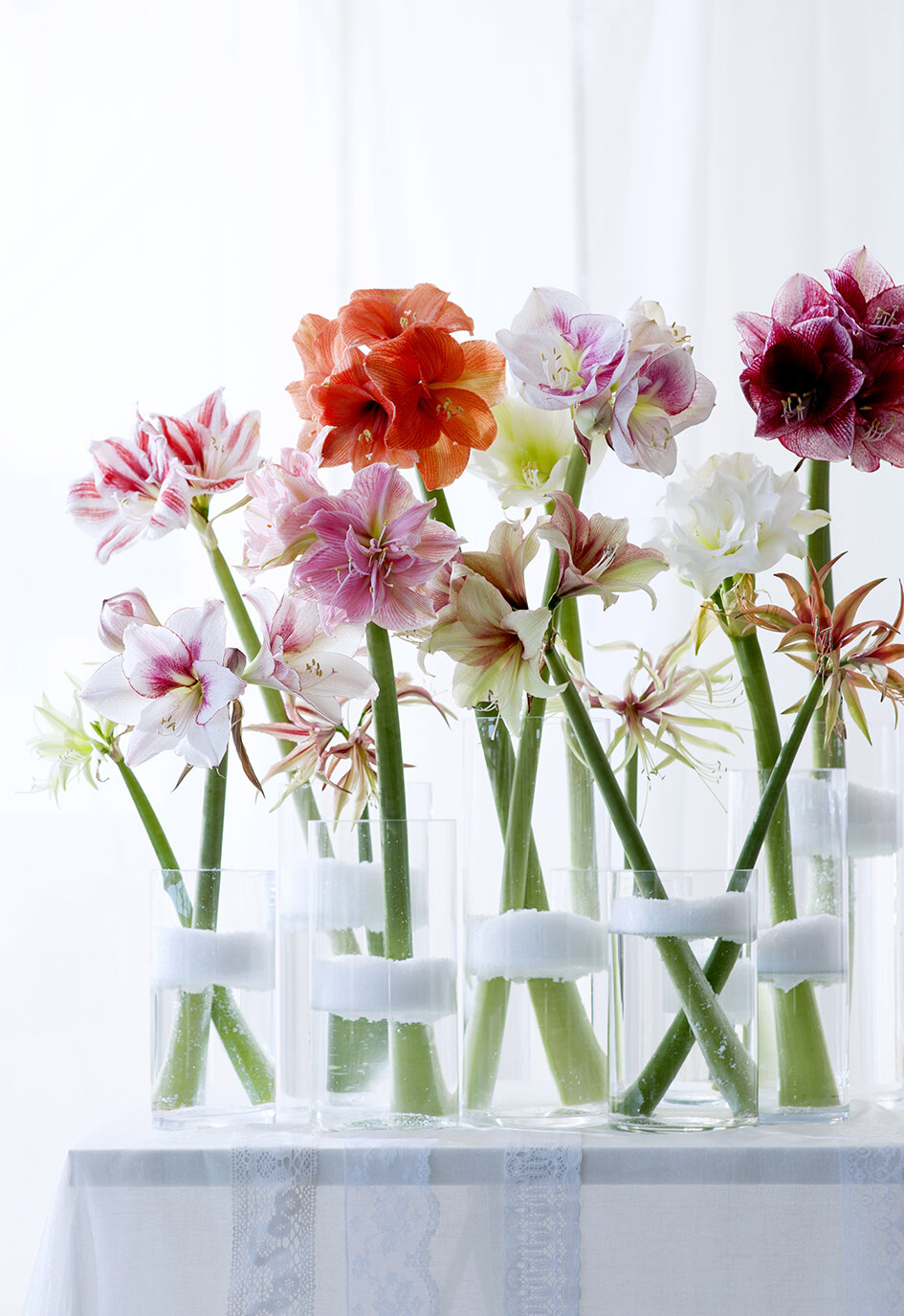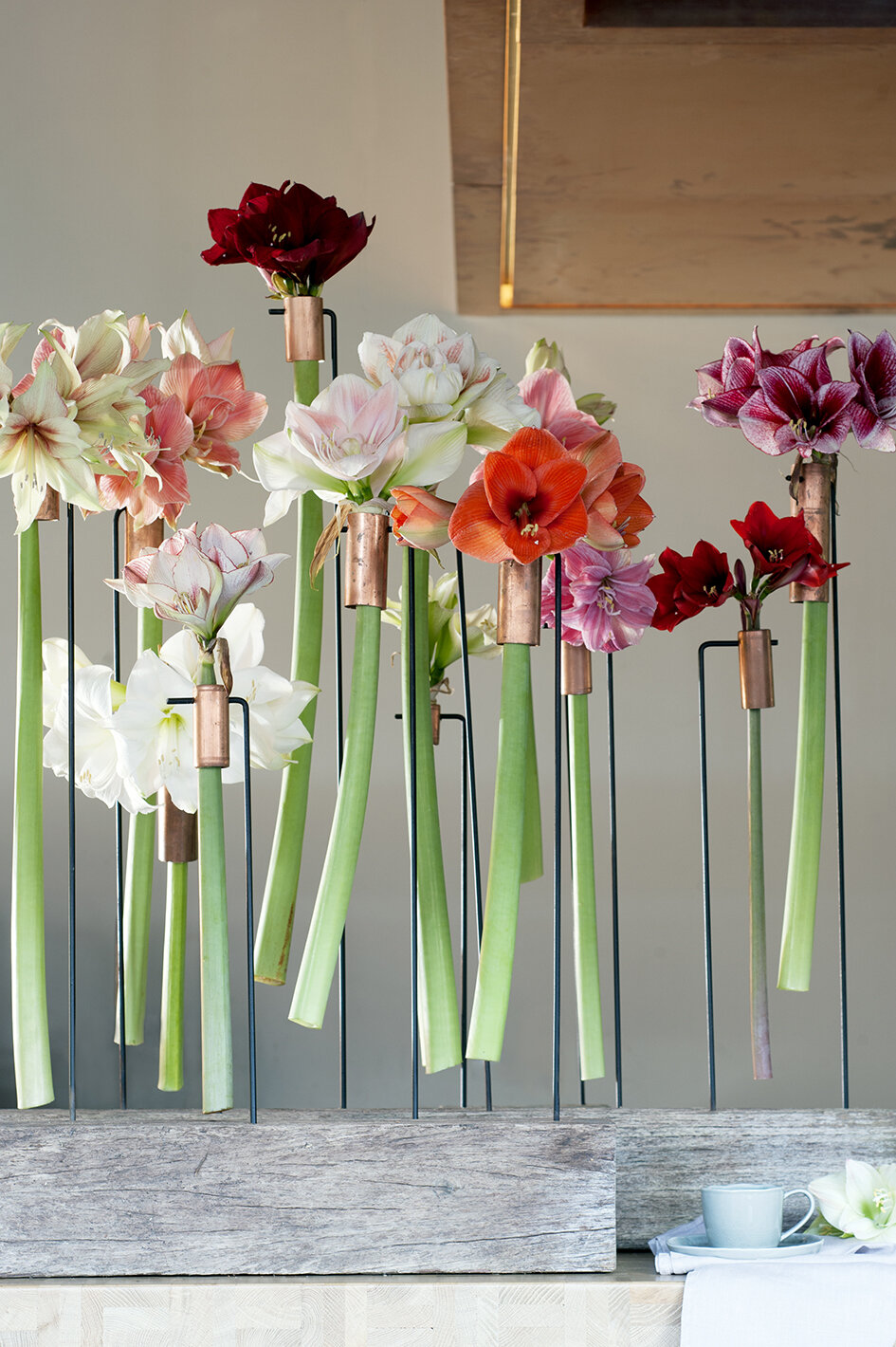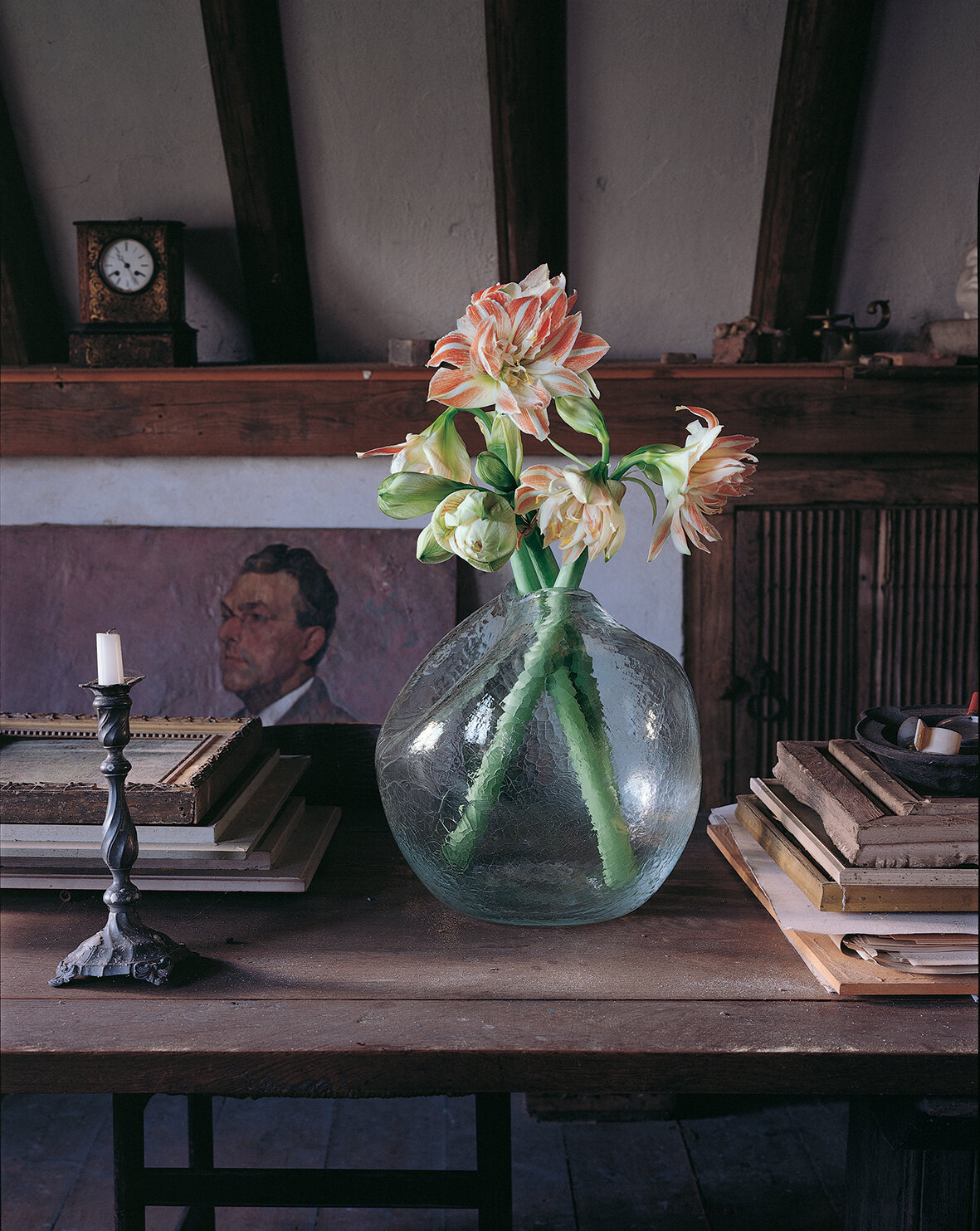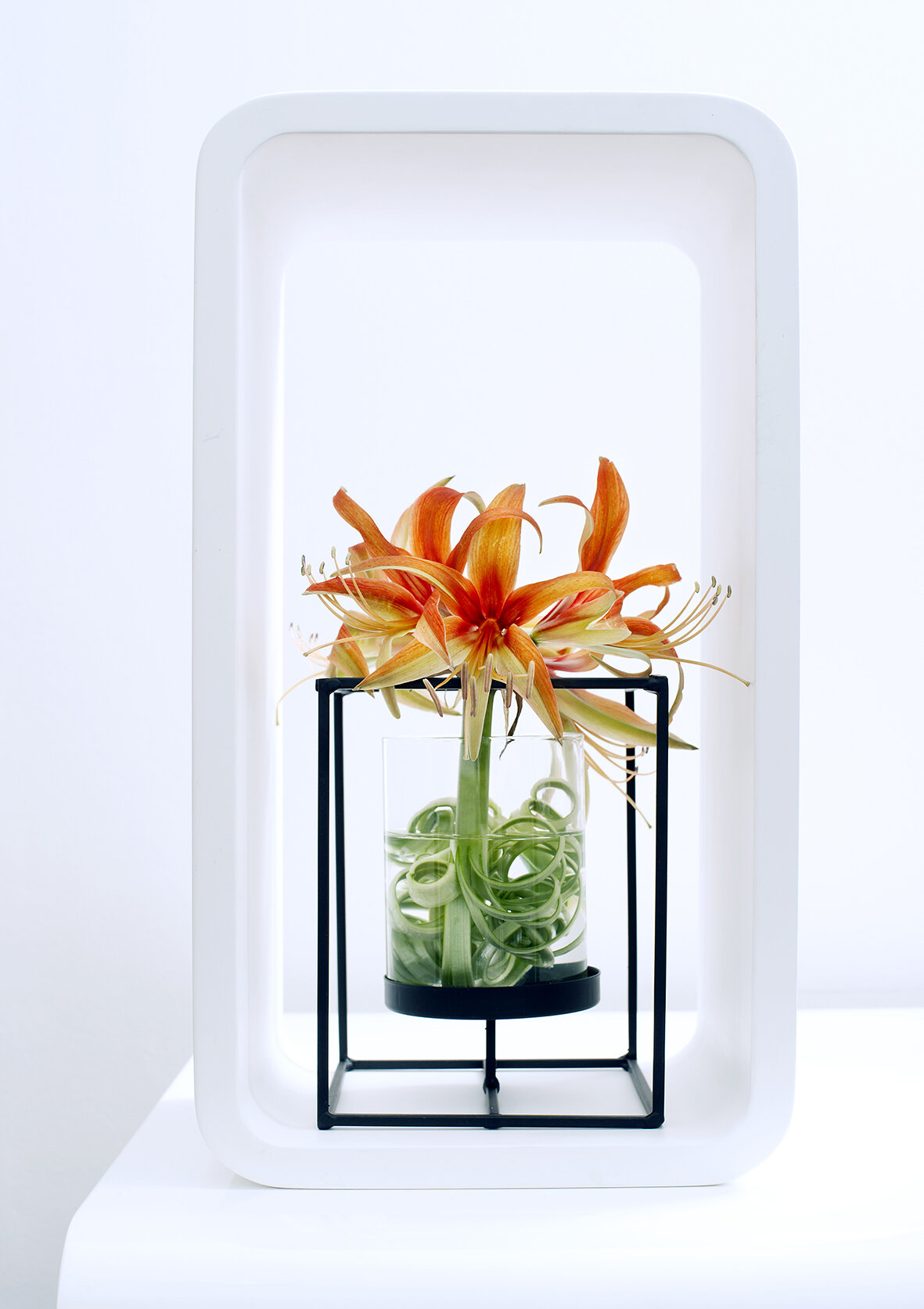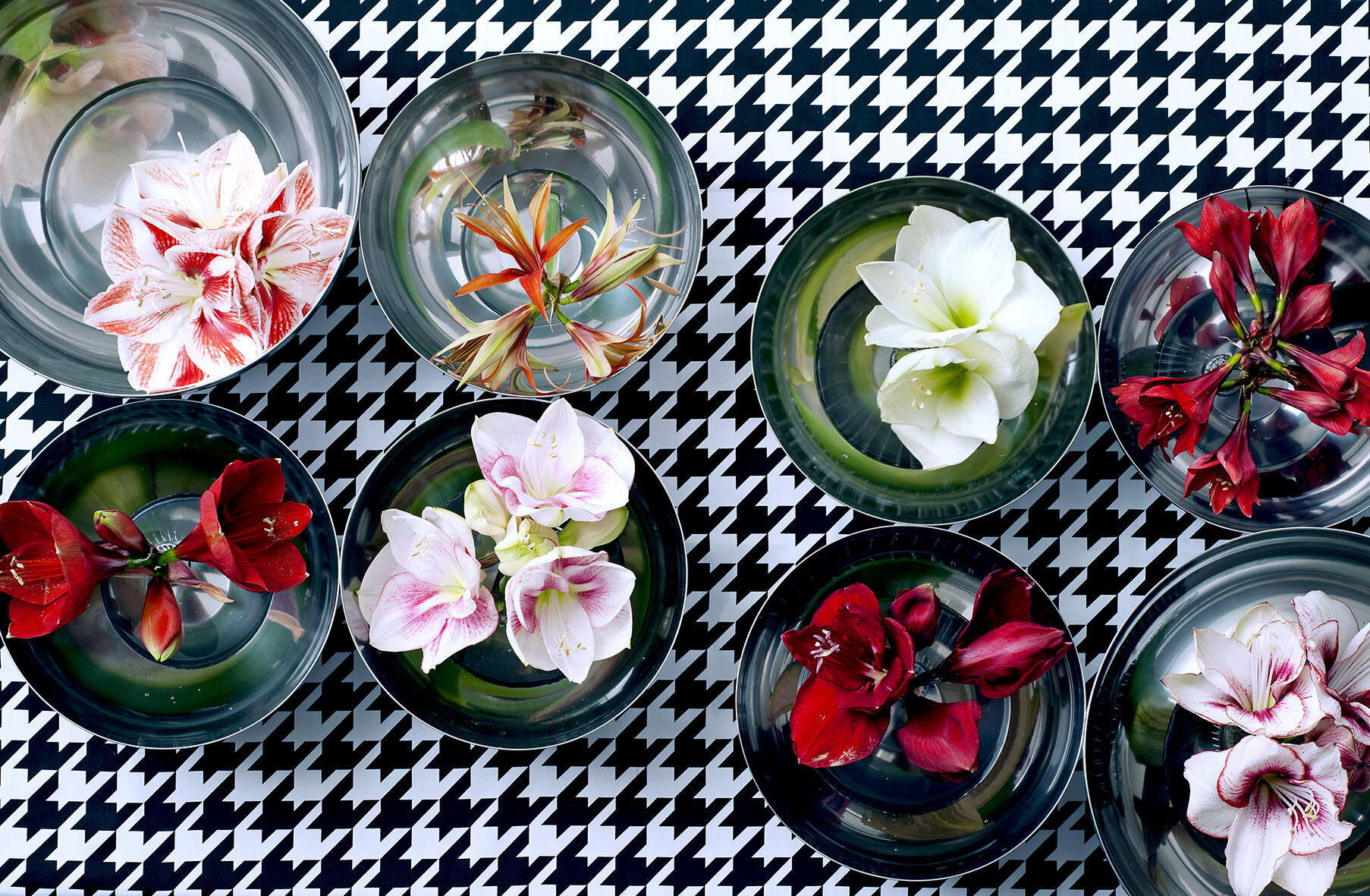The Amaryllis - My Flower of the Month for December
Amaryllis is a stunning statement flower: large flowers, statuesque and stately. Its majestic form is eye-catching and hard to ignore - with smooth hollow stems and enormous flower heads, this is one bloom packed with presence. Amaryllis’ flower petals are very special: they have the luxurious look of soft velvet and come in a wide variety of colours from white, soft pastels through to punchy reds and burgandy.
The smooth leafless stem will produce up to four to six dramatic flowers that can be as much as 20 cm across. Amaryllis is the stat of any mixed bouquet, but also very suitable for an impressive solo display during the winter months.
Origin
The Amaryllis originates from South and Central America and the Caribbean, and rather surprisingly, is a member of the Narcissus family growing from large bulb.
Amaryllis or Hippeastrum?
The flower we know as Amaryllis is actually called Hippeastrum. The name Hippeastrum comes from the Greek and literally means 'knight star', referring to the star-shaped petals: hippeus = knight and astron = star. Generally though, we always know this beautiful flower as Amaryllis and it is always marketed under that more familiar name.
Range
The more recognisable Amaryllis are the large-flowered cultivars of which a particularly beautiful range has been bred. There are the more well known varieties in red and white but to complete the range we see wide selection of colours included bi-coloured, salmon pink and claret. Less well known are the small-flowered varieties that still offer endless possibilities in bouquets and floral work. There are also various groups within the genus based on differing flower shapes which includes the stunning Cybisters with its orchid or spider varieties.
Care tips for customers
Trim the stems diagonally with a sharp knife. The stems will split in time and this is normal. To stop this you could tape the ends or tie and little length of string around the base of the stem
Select a sturdy glass vase. Amaryllis are quite top heavy and have very thick stems, so choose wisely!
Make sure that the vase is very clean, fill it with fresh cool water and use cut flower food for bulb flowers.
Place the vase in a cool spot, keep away from draughts and do not place near a fruit bowl. The ethylene gas given off by aging fruit will cause deterioration in most flowers.
Regularly top the vase up with tap water and change if necessary. Amaryllis are thirsty blooms and the hollow stems will “suck” up a lot of water within. If you remove a stem from the vase be prepared to let it drain out first.
Images courtesy of Flower Council of Holland www.funnyhowflowersdothat.co.uk


